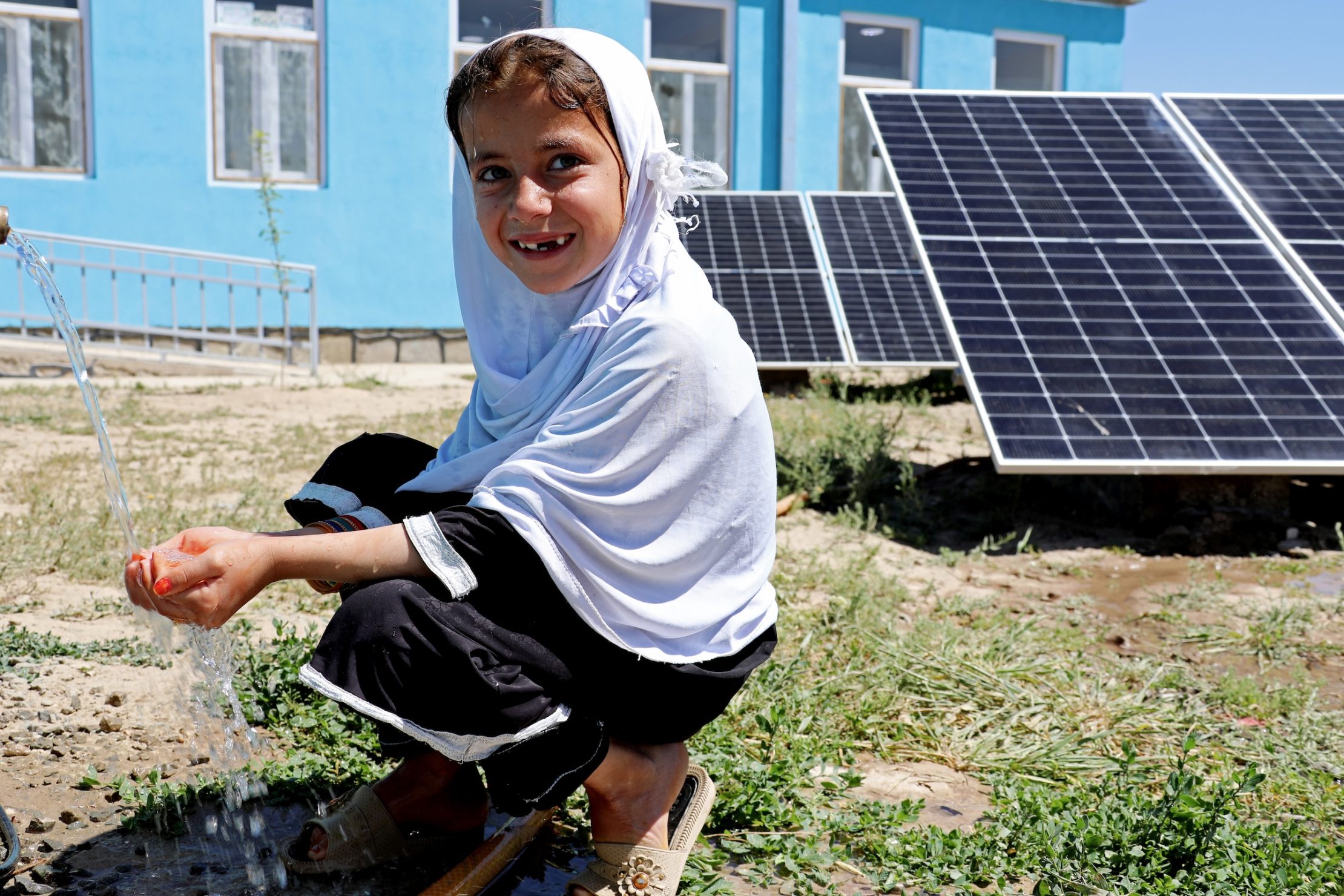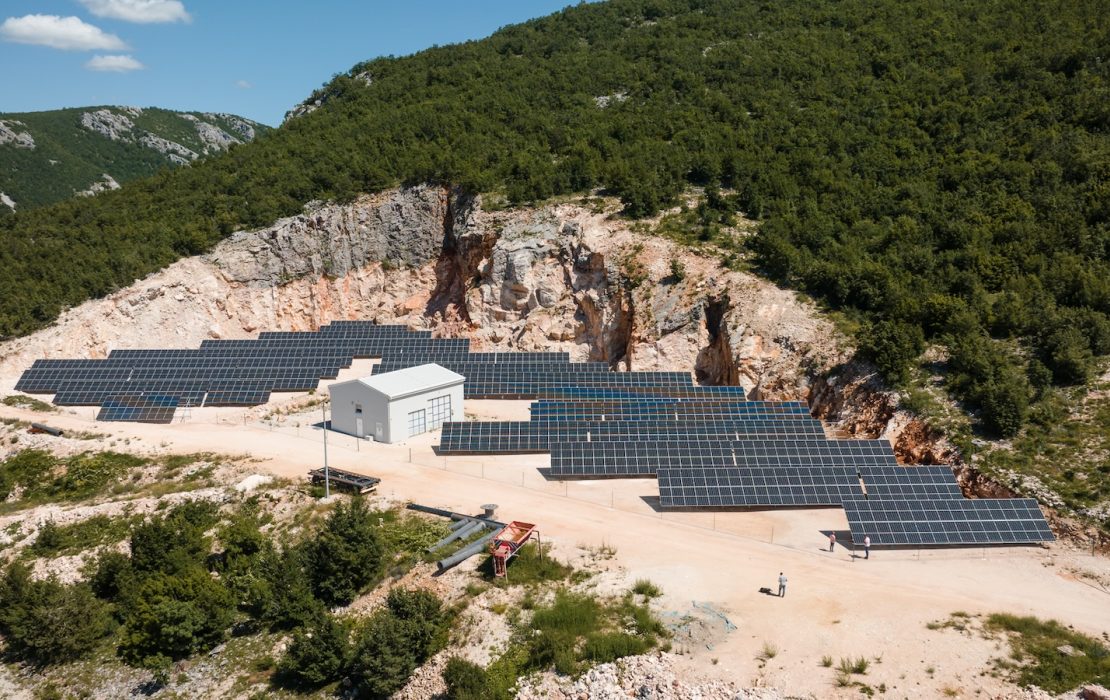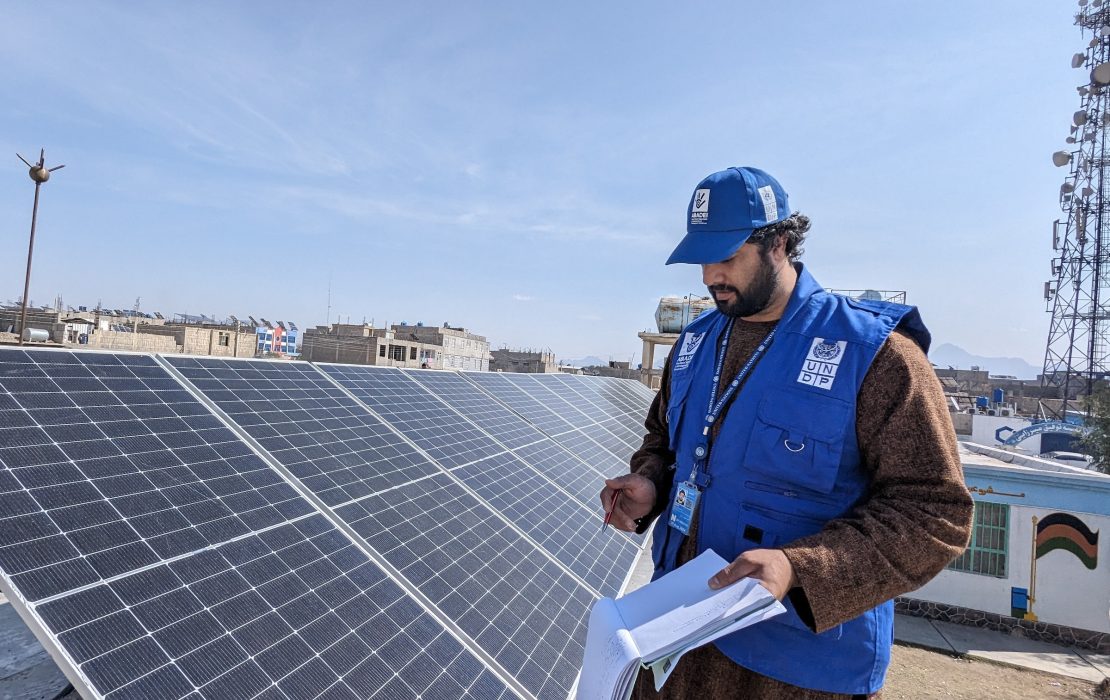
Photo: UNDP Afghanistan
In fragile and conflict-affected settings, efforts to introduce sustainable energy are often deprioritized in the face of more immediate needs like emergency response, protection of civilians or food security. Yet these are precisely the places where clean, reliable and affordable energy can have the most transformative impact: powering essential services such as health clinics, supporting vulnerable populations and livelihoods, and reducing dependence on volatile fuel supplies.
These settings are often characterized by weak governance, political instability and economic volatility. Institutions are overstretched or dysfunctional, infrastructure is degraded, and access to basic services, including energy, can be severely limited. Conditions in these settings vary widely, from active conflict and displacement to protracted humanitarian crises to post-conflict fragility.
Today, half of the world’s extreme poor live in fragile states, a figure expected to reach nearly 60 percent by 2030. By then, up to 2.2 billion people – more than a quarter of the global population – may live in fragile or conflict-affected settings.
The global push for energy transition, especially its emphasis on decarbonization, often feels out of reach in these contexts, where governments are focused on survival and operate with limited institutional and fiduciary capacity. Even when financing is available, it’s often fragmented or tied to conditions too difficult to meet. The result is a cycle where energy poverty undermines service delivery, economic recovery and peacebuilding.
To break this cycle, energy must be seen not as a post-crisis luxury, but as a foundation for resilience. Expanding sustainable energy supports stability while enabling broader decarbonization, powering local industries, transport and public services. The shift from basic access to a full energy transition shouldn’t be sequential. It must happen in parallel, even in fragile settings.
Despite the risks, investing in sustainable energy in these contexts is a strategic imperative. Sustainable energy systems are generally more resilient and adaptable and, when distributed, especially well-suited to fragile contexts. When tailored to local realities, they can rapidly expand access, reduce costs and build institutional capacity, laying the foundation for peace and recovery.
Some fragile states are already proving this is possible. Sustainable energy is delivering results in even the most complex environments: providing lifelines to vulnerable communities, enabling long-term transitions and acting as a lever for systemic transformation.
UNDP is working with governments, communities and partners to turn sustainable energy and decarbonization into practical tools for resilience, recovery, and systemic transformation. Examples from Ukraine, Yemen, Bosnia and Herzegovina and Afghanistan illustrate this potential in action.
Increasing energy security and building back better in Ukraine
In Ukraine, the ongoing war has severely damaged energy and urban infrastructure, placing public utilities like water supply and sewer services under immense strain. Even before the conflict, tariff regulations capped user fees below the actual cost of delivering these services. This left utilities unable to cover operating expenses or invest in new infrastructure, a situation made worse by wartime damage and rising demand for emergency services. In this context, private firms were hesitant to invest due to utilities’ lack of capital and credit history.
To address this, UNDP, with funding from the Global Environment Facility (GEF), introduced an energy service model where private companies finance, design, install and maintain solar power systems on public facilities. This model eliminates upfront costs for municipalities, as they only have to pay for verified energy performance over time. At the same time, solar generation offsets conventional power use, saving money for utilities.
Applied across four water utilities, six hospitals and two kindergartens, the model saves communities over US$382,500 in energy costs annually, while strengthening energy security, empowering the private sector and contributing to resilient recovery.
Reducing dependence on volatile fossil fuel markets in Yemen
Many fragile states rely heavily on imported fossil fuels to meet their energy needs, leaving them exposed to global price shocks, supply chain disruptions and geopolitical volatility. In conflict-affected countries, this dependence becomes even more precarious as infrastructure is damaged and supply routes are insecure. Yemen, for instance, imports over 90 percent of its fuel, with the ongoing conflict repeatedly disrupting fuel imports and distribution. This has resulted in fuel shortages, skyrocketing prices and widespread power outages that threaten essential services like healthcare, education, water provision and food supply chains.
In response, with funding from the Kuwait Fund for Arab Economic Development, UNDP has helped deploy solar energy systems in critical facilities, including hospitals and schools, across the country. These installations have been critical in ensuring uninterrupted power for lifesaving services, including emergency surgeries, vaccine refrigeration and maternal care, especially in remote and underserved areas. Beyond meeting immediate urgent needs, this energy transition has reduced the dependence on costly and vulnerable fuel convoys, which were frequently targeted in insecure areas, improving safety, lowering operational costs and laying groundwork for long-term energy resilience.

A 300-kilowatt solar power plant in Bosnia and Herzegovina provides renewable energy since early 2023. Photo: UNDP Bosnia and Herzegovina

A technician installing solar panels in Afghanistan, supporting the country's recovery efforts. Photo: UNDP Afghanistan
Supporting peace and stability in Bosnia and Herzegovina
Bosnia and Herzegovina faces unique challenges as a post-conflict country with a highly decentralized and fragmented political system, which often hinders policy coordination and long-term development planning. It is also one of the most energy-intensive economies in Europe, heavily reliant on coal and burdened with outdated industrial infrastructure and inefficient energy systems, factors that deepen both environmental and economic fragility.
Decarbonization offers a pathway to address these structural challenges. With support from the Government of Sweden, UNDP has worked to green the economy by improving industrial energy efficiency and expanding the use of renewable energy. A central pillar of this effort has been an innovative green finance model that provides interest-free loans to small- and medium-sized enterprises for energy efficiency upgrades. Capital has been mobilized by blending public subsidies with private investment, unlocking approximately $9 in private funding for every $1 of public contribution.
This has helped businesses lower costs, boost competitiveness and create jobs, particularly in economically marginalized areas. By reducing coal dependence and cutting industrial emissions, these initiatives are advancing Bosnia and Herzegovina’s climate goals while strengthening social cohesion and economic inclusion, both essential to long-term peace and resilience.
Empowering essential services in Afghanistan through solar energy
In Afghanistan, years of conflict and economic collapse have left public services struggling with broken infrastructure, limited resources and unreliable electricity. In many rural and underserved communities, schools and health centres sometimes have to operate in near-darkness, relying on diesel generators, if available, or resorting to phone lights for medical procedures.
With support from the KfW Development Bank, UNDP has installed solar photovoltaic systems across hundreds of schools and health facilities in some of the country’s most remote and fragile areas. These systems are delivering uninterrupted power for essential services and are transforming lives across 19 provinces.
For instance, in Samangan Province, the Feroznakhcheer Health Center now operates uninterrupted, thanks to a newly installed solar system that powers delivery rooms, sterilization equipment, and heating and cooling systems, restoring safety and dignity to maternal care.
The project has directly benefitted over 900,000 people, supporting safer childbirths, expanding learning opportunities for girls, and boosting local employment through jobs in solar system installation and maintenance. By bringing sustainable energy to the frontlines of Afghanistan’s recovery, these efforts are enhancing service delivery, while also building resilience and restoring hope in some of the country’s most vulnerable communities.
Despite the multiple benefits it brings, achieving decarbonization and rolling out sustainable energy solutions in fragile and conflict-affected settings will require a rethinking of how development finance flows and who it serves.
According to some estimates, fragile states will require an estimated $41.5 billion annually by 2030 to mitigate and adapt to climate change, nearly four times the $11 billion they received in 2022. This funding needs to reflect their realities and be flexible, low-cost and accessible. That means scaling concessional finance, shifting investment norms that exclude high-risk regions or countries, and deepening cooperation among countries with shared challenges.
Ultimately, fragile and conflict-affected states must not be forced to choose between energy access and climate ambition. With the right support, they can – and must – pursue both as foundations for security and prosperity.